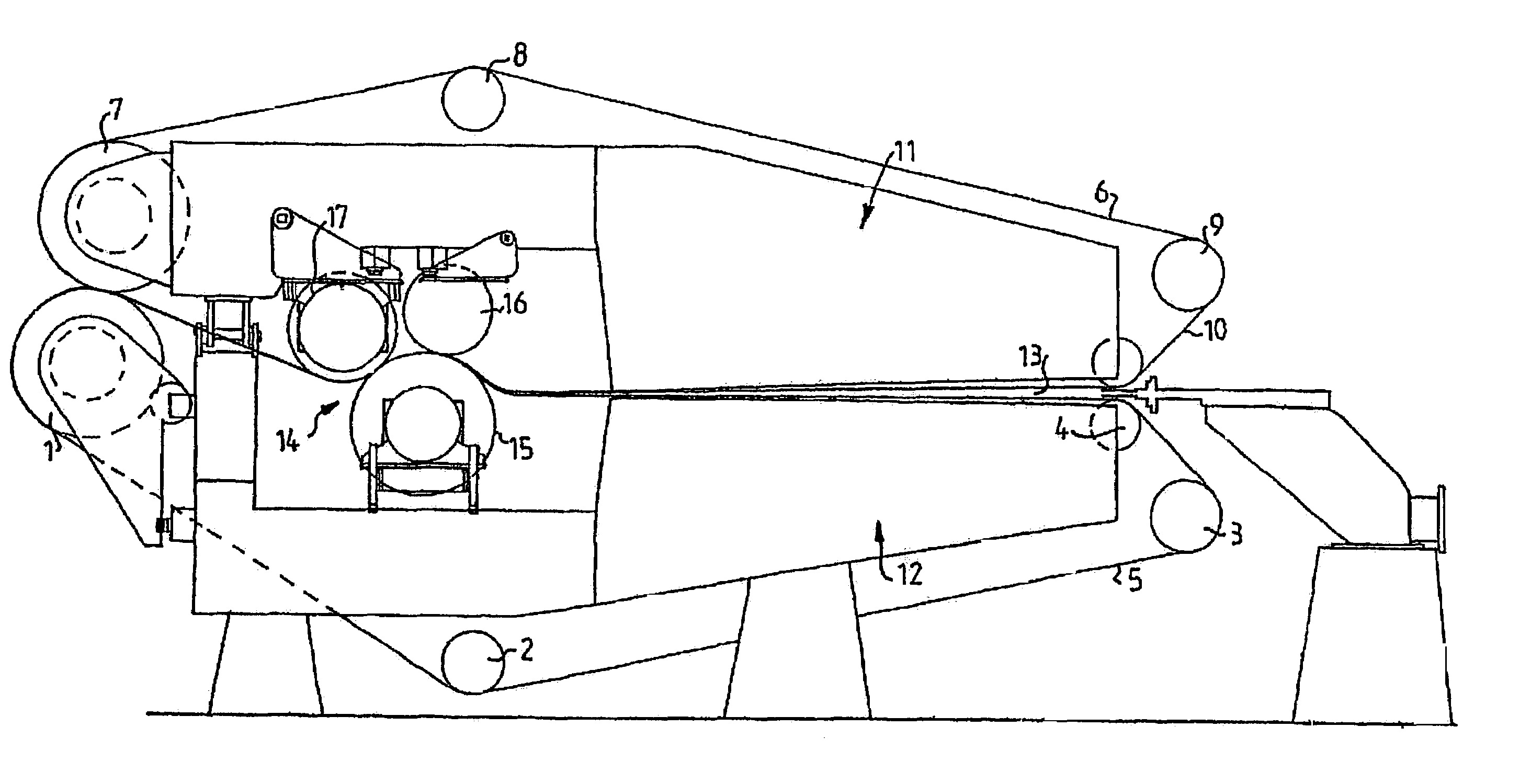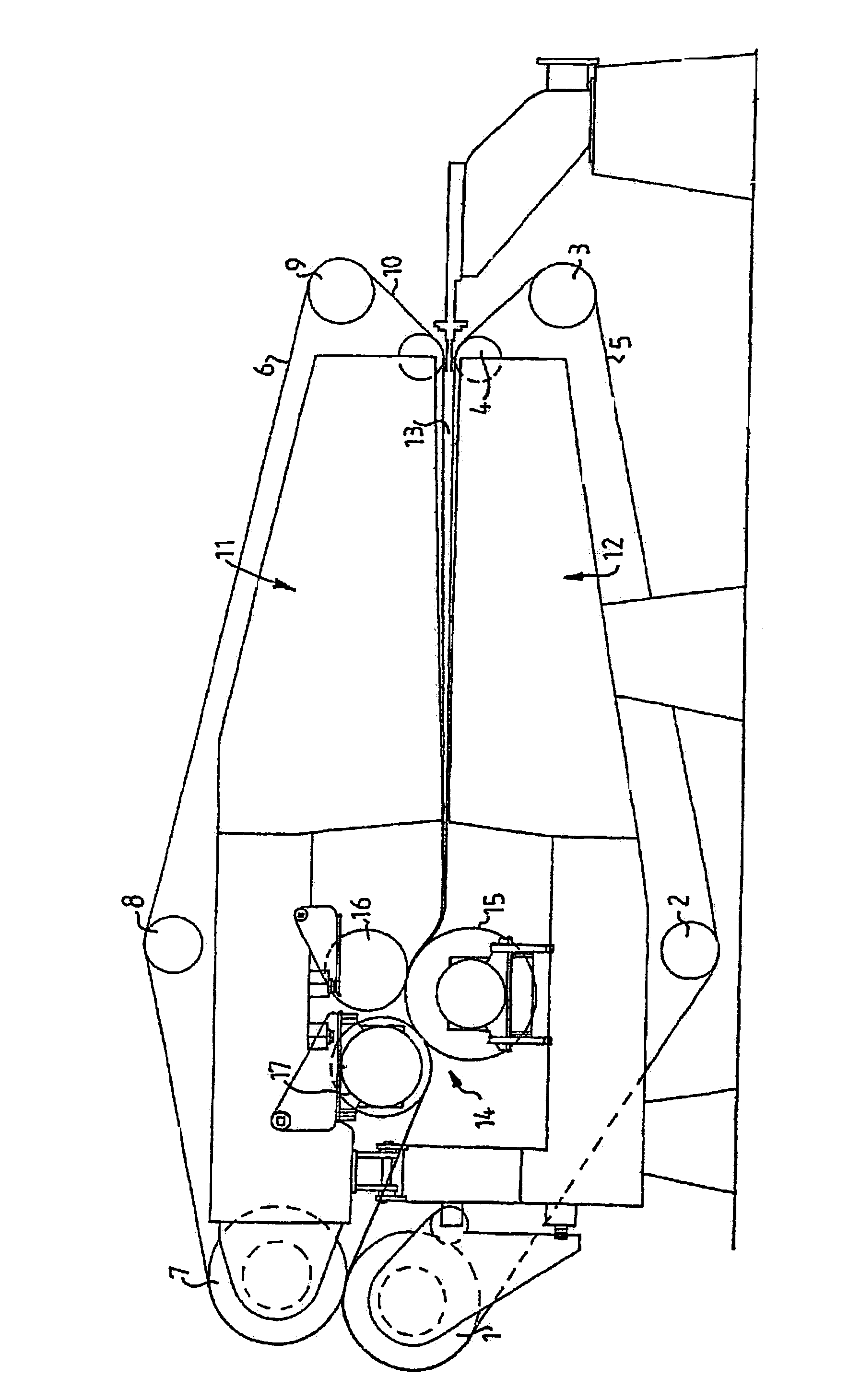Twin-wire belt press
a belt press and twin-wire technology, applied in the direction of press section, separation process, filtration separation, etc., can solve the problem of generating a relatively large flow of white water that cannot be completely removed from the web, and achieve the effect of reducing production costs, improving reliability, and reducing production costs
- Summary
- Abstract
- Description
- Claims
- Application Information
AI Technical Summary
Benefits of technology
Problems solved by technology
Method used
Image
Examples
Embodiment Construction
[0011]FIG. 1 shows a twin-wire belt press in accordance with the present invention comprising four lower rolls: a drive roll 1, a control roll 2, a tensioning roll 3 and a wire belt guide roll 4. An endless lower wire belt 5 runs in a path around the lower rolls 1–4. In a corresponding manner, an upper endless wire belt 6 runs in a path around four upper rolls: a drive roll 7, a control roll 8, a tensioning roll 9 and a wire belt guide roll 10. Between the rolls 1 and 7, and between the rolls 4 and 10 there are sections of the paths running substantially in parallel with each other, wherein the lower wire belt 5 and the upper wire belt 6 co-operate with each other for dewatering a fiber suspension between the wire belts 5,6 during displacement of the wire belts 5,6. An upper dewatering table 11 supporting the upper wire belt 6 and a lower dewatering table 12 supporting the lower wire belt 5 form a wedge-shaped pressure space 13 between the wire belts in the sections of the paths.
[00...
PUM
| Property | Measurement | Unit |
|---|---|---|
| pressure | aaaaa | aaaaa |
| pressing force | aaaaa | aaaaa |
| elastic | aaaaa | aaaaa |
Abstract
Description
Claims
Application Information
 Login to View More
Login to View More - R&D
- Intellectual Property
- Life Sciences
- Materials
- Tech Scout
- Unparalleled Data Quality
- Higher Quality Content
- 60% Fewer Hallucinations
Browse by: Latest US Patents, China's latest patents, Technical Efficacy Thesaurus, Application Domain, Technology Topic, Popular Technical Reports.
© 2025 PatSnap. All rights reserved.Legal|Privacy policy|Modern Slavery Act Transparency Statement|Sitemap|About US| Contact US: help@patsnap.com


